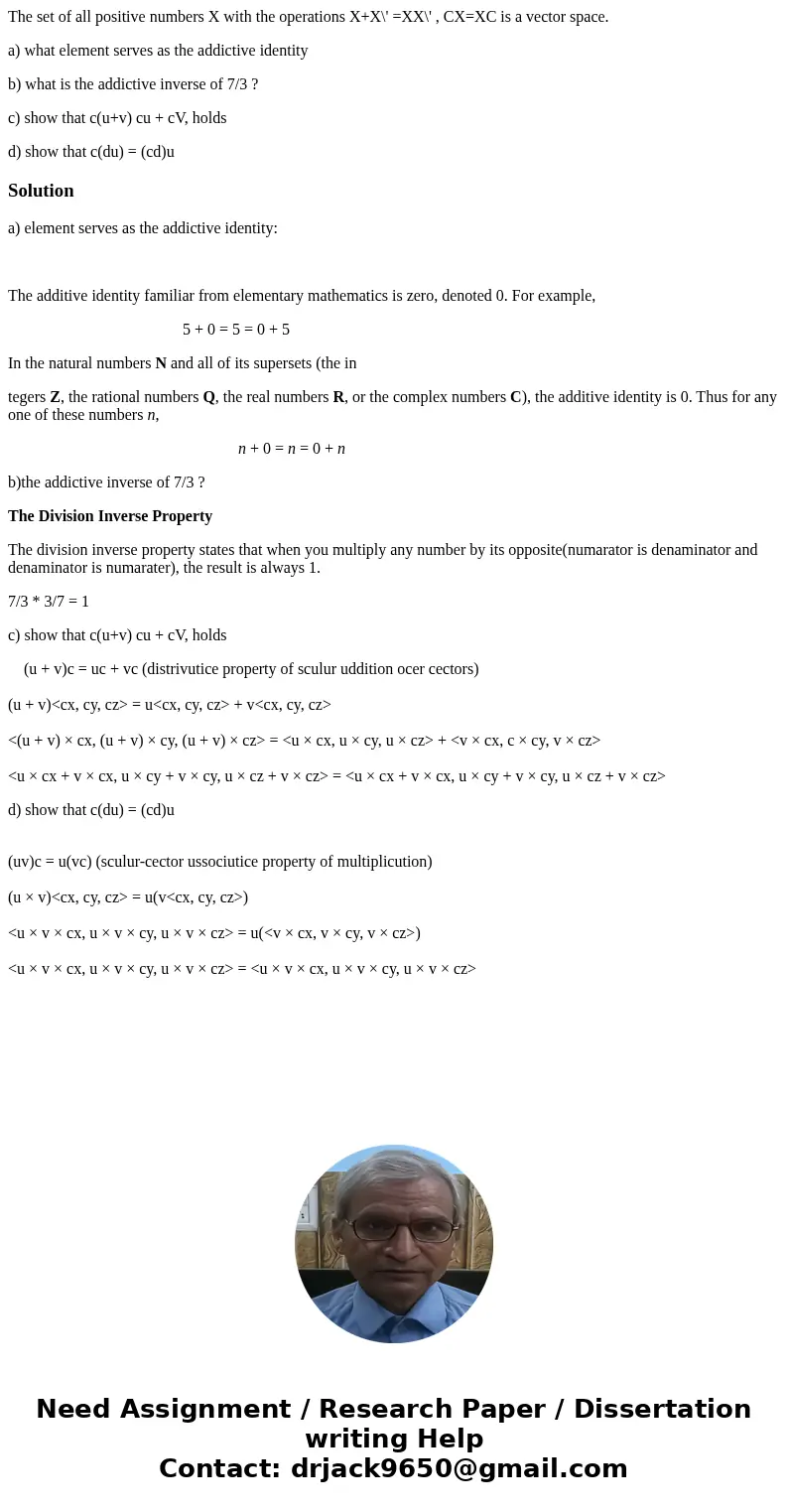The set of all positive numbers X with the operations XX XX
The set of all positive numbers X with the operations X+X\' =XX\' , CX=XC is a vector space.
a) what element serves as the addictive identity
b) what is the addictive inverse of 7/3 ?
c) show that c(u+v) cu + cV, holds
d) show that c(du) = (cd)u
Solution
a) element serves as the addictive identity:
The additive identity familiar from elementary mathematics is zero, denoted 0. For example,
5 + 0 = 5 = 0 + 5
In the natural numbers N and all of its supersets (the in
tegers Z, the rational numbers Q, the real numbers R, or the complex numbers C), the additive identity is 0. Thus for any one of these numbers n,
n + 0 = n = 0 + n
b)the addictive inverse of 7/3 ?
The Division Inverse Property
The division inverse property states that when you multiply any number by its opposite(numarator is denaminator and denaminator is numarater), the result is always 1.
7/3 * 3/7 = 1
c) show that c(u+v) cu + cV, holds
(u + v)c = uc + vc (distrivutice property of sculur uddition ocer cectors)
(u + v)<cx, cy, cz> = u<cx, cy, cz> + v<cx, cy, cz>
<(u + v) × cx, (u + v) × cy, (u + v) × cz> = <u × cx, u × cy, u × cz> + <v × cx, c × cy, v × cz>
<u × cx + v × cx, u × cy + v × cy, u × cz + v × cz> = <u × cx + v × cx, u × cy + v × cy, u × cz + v × cz>
d) show that c(du) = (cd)u
(uv)c = u(vc) (sculur-cector ussociutice property of multiplicution)
(u × v)<cx, cy, cz> = u(v<cx, cy, cz>)
<u × v × cx, u × v × cy, u × v × cz> = u(<v × cx, v × cy, v × cz>)
<u × v × cx, u × v × cy, u × v × cz> = <u × v × cx, u × v × cy, u × v × cz>

 Homework Sourse
Homework Sourse